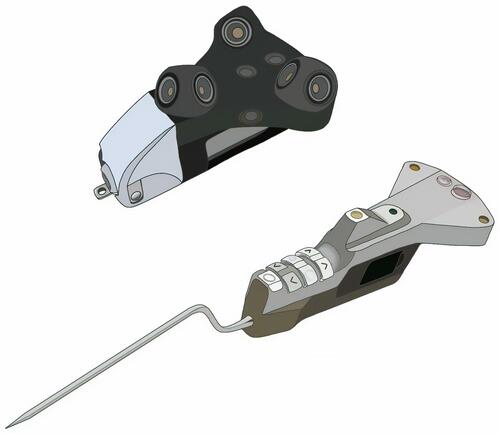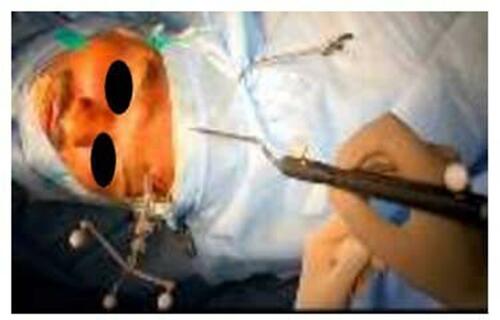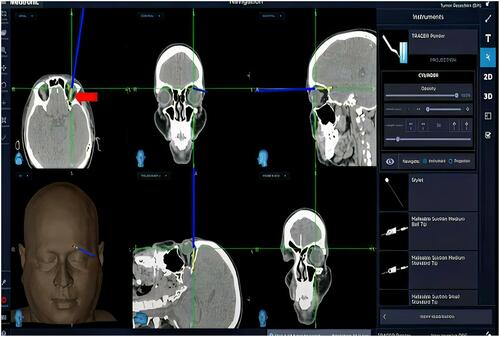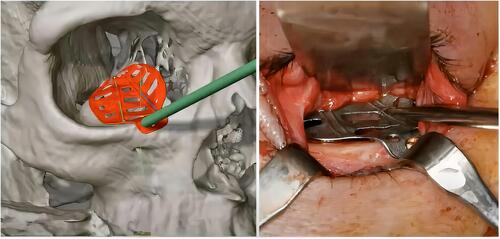Figures & data
Figure 1 A localizer (top) and a surgical probe or tracker (bottom) – Technical part of a navigation system. A localizer is fixed on patient forehead and a surgical probe or tracker guides surgeon for point registration.

Figure 2 Intra-operative placement of localizer and a surgical probe. A pointed end of surgical probe serves a purpose of marking anatomical landmark.



